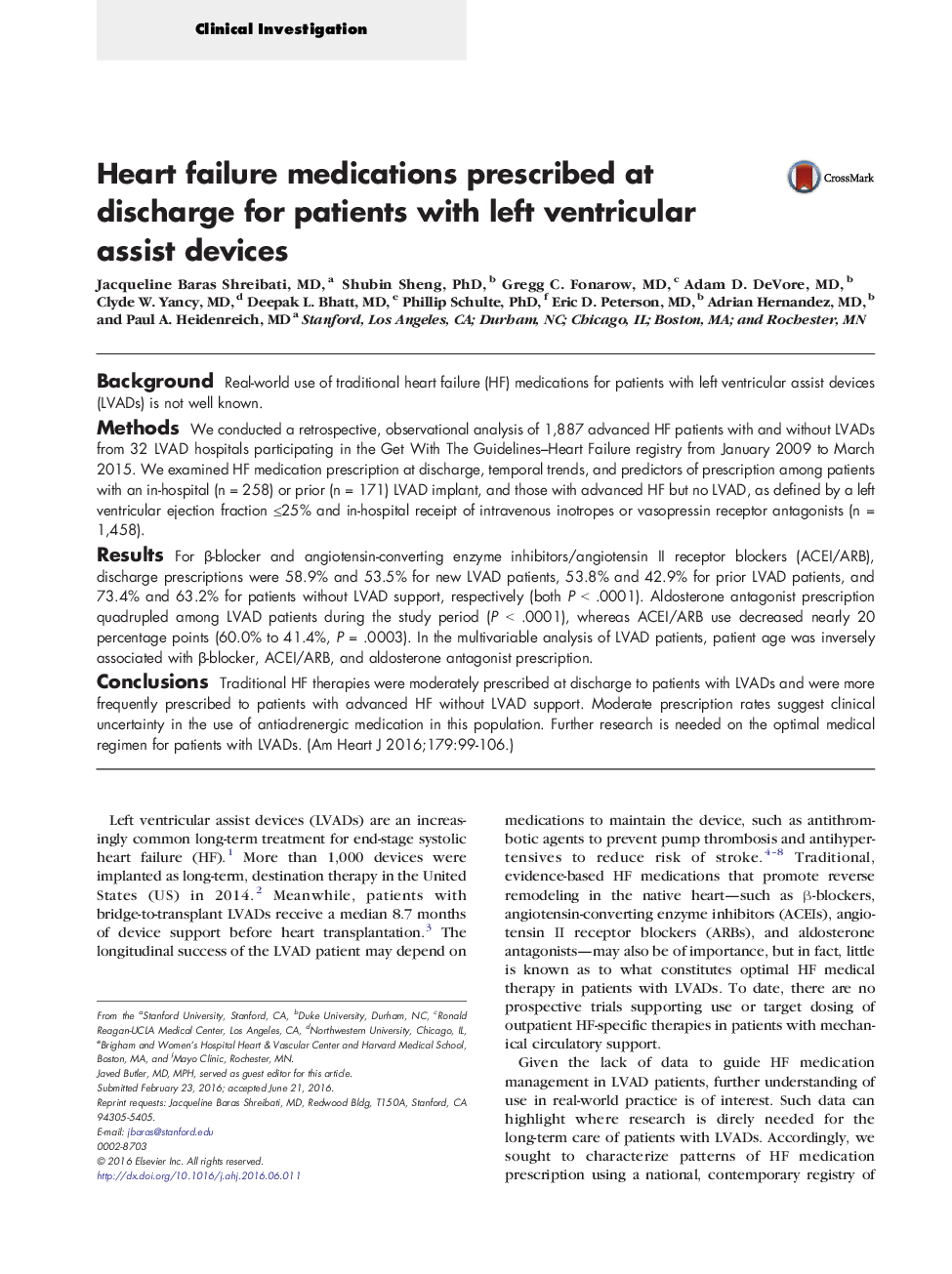| Article ID | Journal | Published Year | Pages | File Type |
|---|---|---|---|---|
| 5926699 | American Heart Journal | 2016 | 8 Pages |
BackgroundReal-world use of traditional heart failure (HF) medications for patients with left ventricular assist devices (LVADs) is not well known.MethodsWe conducted a retrospective, observational analysis of 1,887 advanced HF patients with and without LVADs from 32 LVAD hospitals participating in the Get With The Guidelines-Heart Failure registry from January 2009 to March 2015. We examined HF medication prescription at discharge, temporal trends, and predictors of prescription among patients with an in-hospital (n = 258) or prior (n = 171) LVAD implant, and those with advanced HF but no LVAD, as defined by a left ventricular ejection fraction â¤25% and in-hospital receipt of intravenous inotropes or vasopressin receptor antagonists (n = 1,458).ResultsFor β-blocker and angiotensin-converting enzyme inhibitors/angiotensin II receptor blockers (ACEI/ARB), discharge prescriptions were 58.9% and 53.5% for new LVAD patients, 53.8% and 42.9% for prior LVAD patients, and 73.4% and 63.2% for patients without LVAD support, respectively (both P < .0001). Aldosterone antagonist prescription quadrupled among LVAD patients during the study period (P < .0001), whereas ACEI/ARB use decreased nearly 20 percentage points (60.0% to 41.4%, P = .0003). In the multivariable analysis of LVAD patients, patient age was inversely associated with β-blocker, ACEI/ARB, and aldosterone antagonist prescription.ConclusionsTraditional HF therapies were moderately prescribed at discharge to patients with LVADs and were more frequently prescribed to patients with advanced HF without LVAD support. Moderate prescription rates suggest clinical uncertainty in the use of antiadrenergic medication in this population. Further research is needed on the optimal medical regimen for patients with LVADs.
